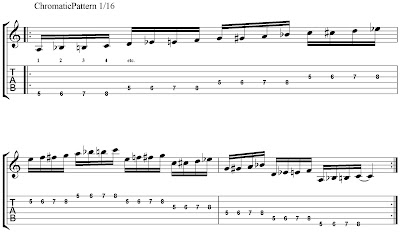Howdy,
with the help of Nick Kinkade - great bluesman and
Panda savior - I wrote:
Everything You Want to Know About the
Blues.
It is very intricate to write a blues, I mean A BLUES, a good, a real one and a lot of people are asking me about "how to write a blues":
3 chords but the magic you'll put in between the notes will make all the difference in the world. The lyrics are really important too...
However you have some rules you cannot forget about the Blues, otherwise it will be everything but a blues, like a kiss without the salt of emotion.
The folks who know me also know how much I love the American Culture:
from the
Levi's 501 - my favorite - to
Panic at the Disco, I look at America and love each inch of the country and especially you people. Rickie Lee Jones is also another fantastic reason to love the US.
If you are new to Blues music, or like it but never really understood the whys and wherefores, here are some very fundamental rules:
1. Most Blues begin with: "Woke up this morning..."
2. "I got a good woman" is a bad way to begin the Blues, unless you stick something nasty in the next line like, "I got a good woman, with the meanest face in town."
3. The Blues is simple. After you get the first line right, repeat it.
Then find something that rhymes - sort of: "Got a good woman with the meanest face in town.Yes, I got a good woman with the meanest face in town... Got teeth like Margaret Thatcher and she weigh 500 pound."
4. The Blues is not about choice. You stuck in a ditch, you stuck in a ditch...ain't no way out.
5. Blues cars include Chevys, Fords, old Cadillacs and broken-down trucks. Blues don't travel in no Volvos, BMWs, or Sport Utility Vehicles...Most Blues transportation is a
Greyhound bus or a southbound train. Jet aircraft and state-sponsored motor pools ain't even in the running...
Walkin' plays a major part in the Blues
lifestyle. So does fixin' to die.
6. Teenagers can't sing the Blues. They ain't fixin' to die yet. Adults sing the Blues. In Blues, "adulthood" means being old enough to get the electric chair if you shoot a man in Memphis .
7. Blues can take place in New York City but not in Hawaii or anywhere in Canada . Hard times in Minneapolis or Seattle is probably just clinical depression. Chicago , St. Louis , Kansas City, Memphis , and N'awlins are still the best places to have the Blues. You cannot have the Blues in any place that don't get no rain.
8. A man with male pattern baldness ain't the Blues. A woman with male pattern baldness is. Breakin' yo leg 'cause you been skiing is not the Blues. Breakin' yo leg 'cause a 'gator be chomping on it is.
9. You can't have no Blues in an office or a shopping mall. The lighting is wrong. Go outside to the parking lot or sit by the dumpster.
10. Good places for the Blues:
a. highway
b. jailhouse
c. empty bed
d. bottom of a whiskey glass
11. Bad places for the Blues:
a. Nordstrom's
b. gallery openings
c. Ivy League institutions
d. golf courses
12. No one will believe it's the Blues if youwear a suit, unless you happen to be an old person, and you slept in it.
13. Do you have the right to sing the Blues? Yes, if:
a. you're older than dirt
b. you're blind
c. you shot a man in Memphis
d. you can't be satisfied
No, if:
a. you have all your teeth
b. you were once blind, but now can see
c. the man in Memphis lived
d. you have a trust fund or a $400k salary
14. Blues is not a matter of race or color.It's a matter of bad luck.
Tiger Woods cannot sing the Blues. Sonny Liston could have. Ugly white people also got a leg up on the Blues.
15. If you ask for water and your darlin' gives you gasoline, it's the Blues.Other acceptable Blues beverages are:
a. cheap wine
b. whiskey or bourbon
c. muddy water
d. black coffee
The following are NOT Blues beverages:
a. Perrier
b. Chardonnay
c. Snapple
d. Slim Fast
16. If death occurs in a cheap motel or ashotgun shack, it's a Blues death. Stabbed in the back by a jealous loveris another Blues way to die. So are the electric chair, substance abuse, anddying lonely on a broken-down cot. You can'thave a Blues death if you die during a tennismatch or while getting liposuction.
17. Some Blues names for women:
a. Sadie
b. Big Mama
c. Bessie
d. Fat River Dumpling
18. Some Blues names for men:
a. Joe
b. Willie
c. Little Willie
d. Big Willie
19. Women with names like Amber, Jennifer, Jade, Kitty, Kimberly, or Heather, and men with names like Christopher, Gary, Larry, David, Robert,or Biff can't sing the Blues no matter how manymen they shoot in
Memphis .
20. It doesn't matter how tragic your life is,if you own a computer, you cannot sing the blues,period...Sorry.
 Howdy "all y'all" !
Howdy "all y'all" !






























